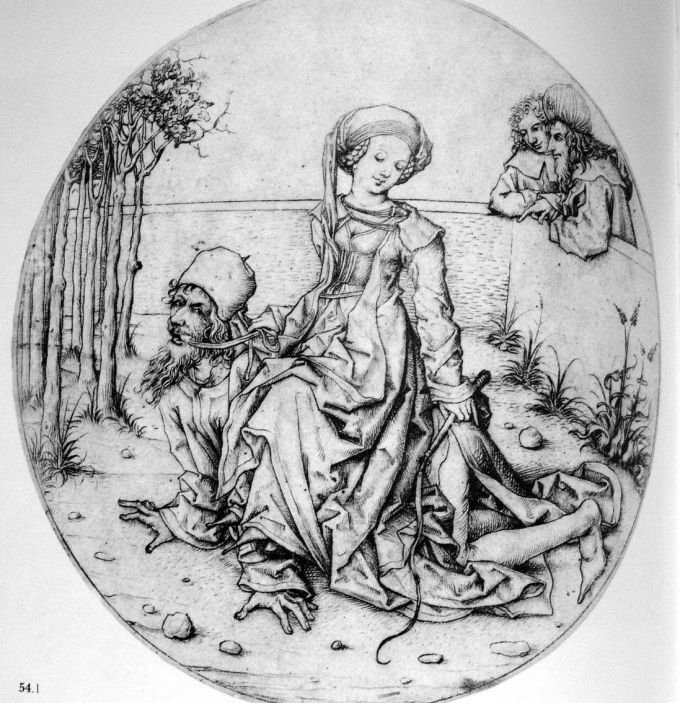While the word dominatrix may have relatively recent coinage – as covered in yesterday’s post – the concept of femdom and male submission has been around a lot longer. It’s obviously impossible to know its true history, but given that sex, power and control have fascinated humans for thousands of years, I’m guessing kink has been around since we climbed out of the trees and decided to take an extended camping holiday on the plains of Africa.
Sadly those early humans haven’t left us a lot of information about their sex lives, but if you look to more recent recorded history, there’s no shortage of femdom. For example, the 12th century brings us the story of Phyllis and Aristotle. Although it features a famous Greek philosopher, the story is medieval in origin.
Aristotle advised his pupil Alexander to avoid the king’s seductive mistress, Phyllis, but was himself captivated by her. She agreed to ride him, on condition that she could play the role of dominatrix. Phyllis had secretly told Alexander what to expect, and he witnessed Phyllis proving that a woman’s charms could overcome even the greatest philosopher’s male intellect.
That’s a lot of kinks to pack into a short story. You’ve not only got femdom but also pony play, cuckolding, voyeurism and public humiliation.
 This artwork of Phyllis and Aristotle, with Alexander looking on, is circa 1485 and is attributed to the German artist known as Master of the Housebook.
This artwork of Phyllis and Aristotle, with Alexander looking on, is circa 1485 and is attributed to the German artist known as Master of the Housebook.
If you’re interested in to read more of the background to this story, and see more of the associated artwork, check out this blog post. The author attributes the historical popularity of the story to male anxiety of powerful women. That’s possible, but couldn’t it also be attributed to kinking on powerful women and an excuse to create femdom artwork in a socially acceptable context?